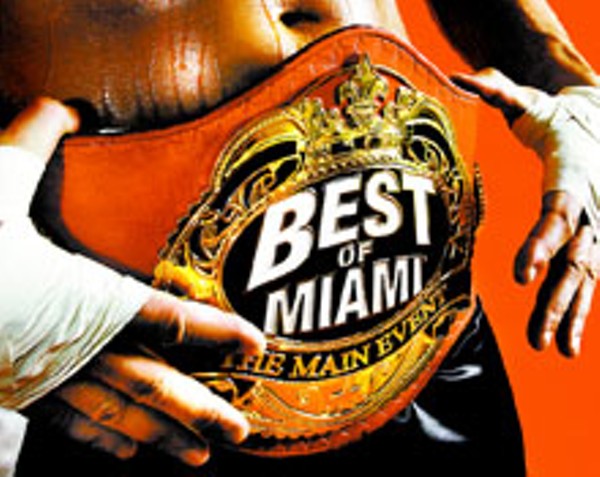Best Fajita
Paquito's Mexican Restaurant
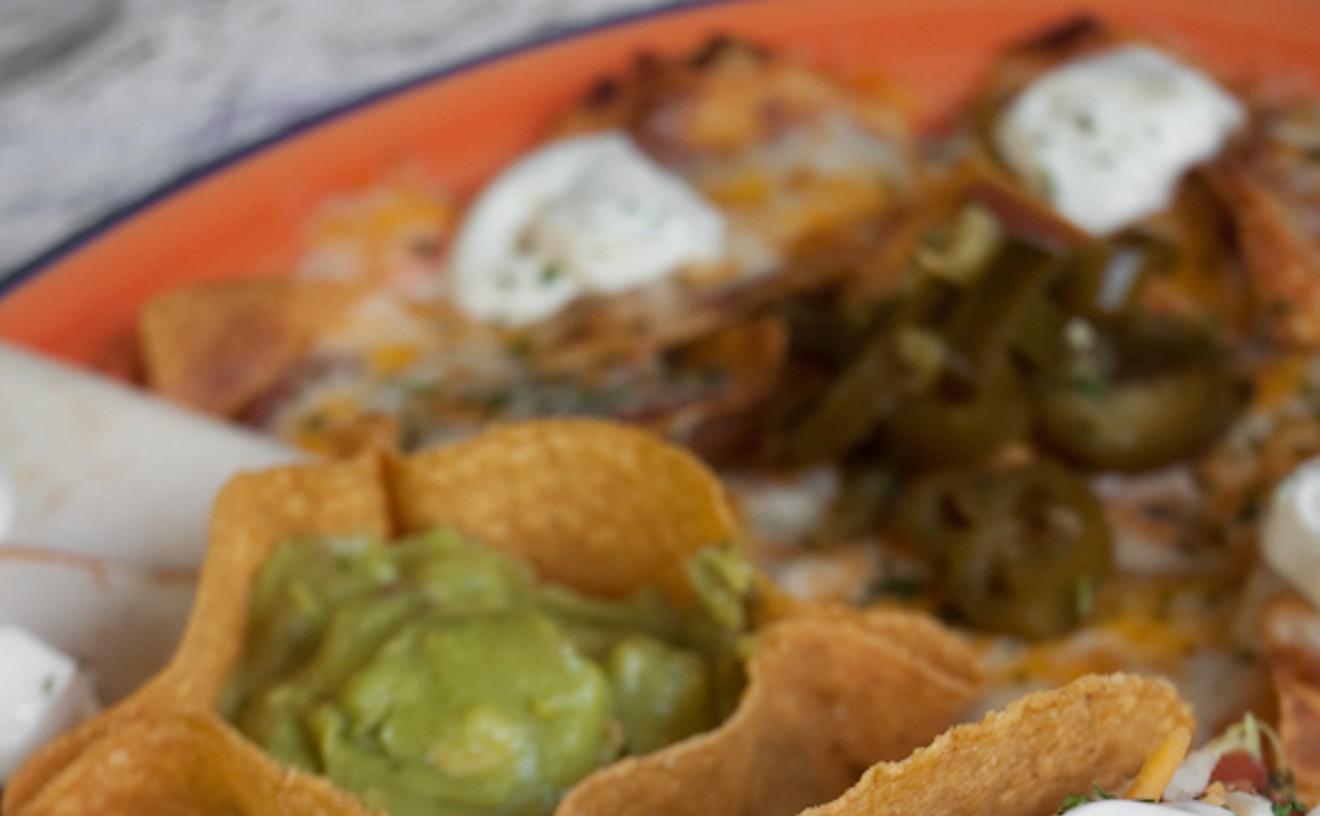
Aran S Graham
At first glance, you might think a Technicolor piñata had exploded here. Tables hide their tops in throbbing shades of violet and orange, vibrant streamers flirt from the ceiling, and landscapes in the colors of a Frida Kahlo painting cram just about every inch of available wall space. But what will really send you into orbit are Paquito's fajitas. For $15, you receive a fragrant, sizzling platter of meat -- beef, chicken, pork, shrimp, or fish -- with a substantial helping of caramelized onions, green bell peppers, mushrooms, and cherry tomatoes. Pile on generously jalapeño-heated salsa verde or, for those with more delicate sensibilities, the carrot-sweet (yet sufficiently garlicky) red salsa. You also, of course, get a saffron-flavor heap of rice, creamy refried beans, a hearty mixture of both cheddar and jack cheeses, and a buttery mound of guacamole. Choose from fresh, steaming packets of either white or corn tortillas. (Tip: The corn pairs especially well with the salmon or tilapia version.) Wash it all down with a fancy margarita. Try the $8 La Pachanga -- doused with Sauza Tres Generaciones tequila and Marie Brizard Grand Orange liqueur au cognac -- and pretend you are on the range. Except for the froufrou, though delicious, cognac margarita, it don't get more cowpoke Tex-Mex than this.
- 16265 Biscayne Blvd., North Miami Beach, 33160 Map
- 305-947-5027
Best Under-the-Radar Restaurant
Vida! Bistro & Wine
You probably have no idea there is a parade of great food marching through Vida's seductive dining room five nights a week. Duck magret over Granny Smith risotto. Char-grilled Bahamian wahoo with grape tomato vinaigrette. Panko-crusted prawns atop chilled peanut vermicelli. These very dishes could conceivably compose the first three courses of an always-changing prix-fixe menu. The meal progresses from light to hearty, with red meats such as Wagyu steak, farm-raised venison, and pecan-crusted rabbit loin following the fish courses in step. Luscious desserts such as bananas Foster cake with brûlée topping compose the festive finale. A seven-course dinner is $75, five courses cost $65, and $40 brings a three-course meal. A five-glass flight, ordered à la carte, is $50. Service is intensely attentive yet appropriately discreet. This is not the sort of dining you will want to partake of every evening, but keep Vida fixed on your radar for any special occasion. Particularly a romantic one.
Best Food Court
The Mix at Johnson & Wales
What other food court features professionally trained culinary school students preparing your meal? Don't rack your brain: The answer is none. The Mix, located on the North Miami campus of Johnson & Wales, not only has an enviable pool of talented workers from which to draw, but also the bright lineup of ethnic food stalls is more dashingly designed than those you are likely to find in airports and malls. The categories of cuisine proffered are similar to the norm -- coffee and pastries, subs, Tex-Mex, Mediterranean -- but the menu changes daily at each of the eateries, and foodstuffs offered are more ambitious than most. Meats slowly roasted on a rotisserie, seafood items sizzled on a grill, and pizzas and pastas baked in an open-hearth oven are especially noteworthy. But something else makes The Mix unique among food courts: After lunch, you can peer into nearby classroom/kitchens and watch the chefs of tomorrow fidgeting with chickens and things.
Best Taco
Rosita's
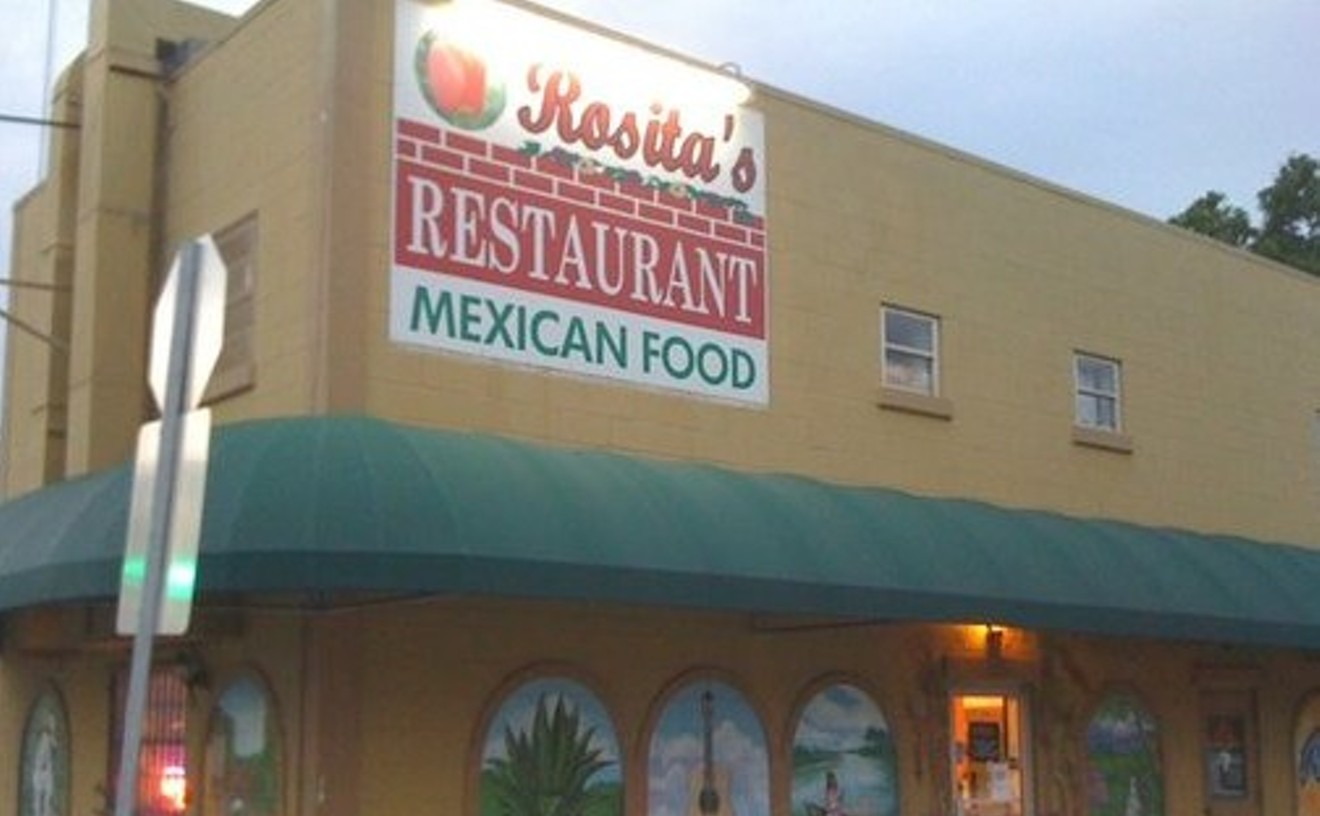
Consider the taco an element, like boron or lead or molybdenum. Beans, cheese, lettuce, guacamole, sour cream -- such abominations correspond to a taco about as much as wasabi beurre blanc does. A soft corn tortilla, meat -- lots of it, gum-tender, and highly seasoned -- and a dollop of salsa, preferably one with a kick to it, are all that compose a proper taco. And Rosita's turns out proper tacos. You can get three of them -- shredded beef (the best), chicken, and chorizo and potato -- plus rice, refried beans, and a small tomato-lettuce salad for $6.50. That is about as cheap and elemental as you can get, especially considering the price of a three-fer of molybdenum these days.
- 199 W. Palm Dr., Florida City, 33034 Map
- 305-246-3114
Best Outdoor Dining
Talula
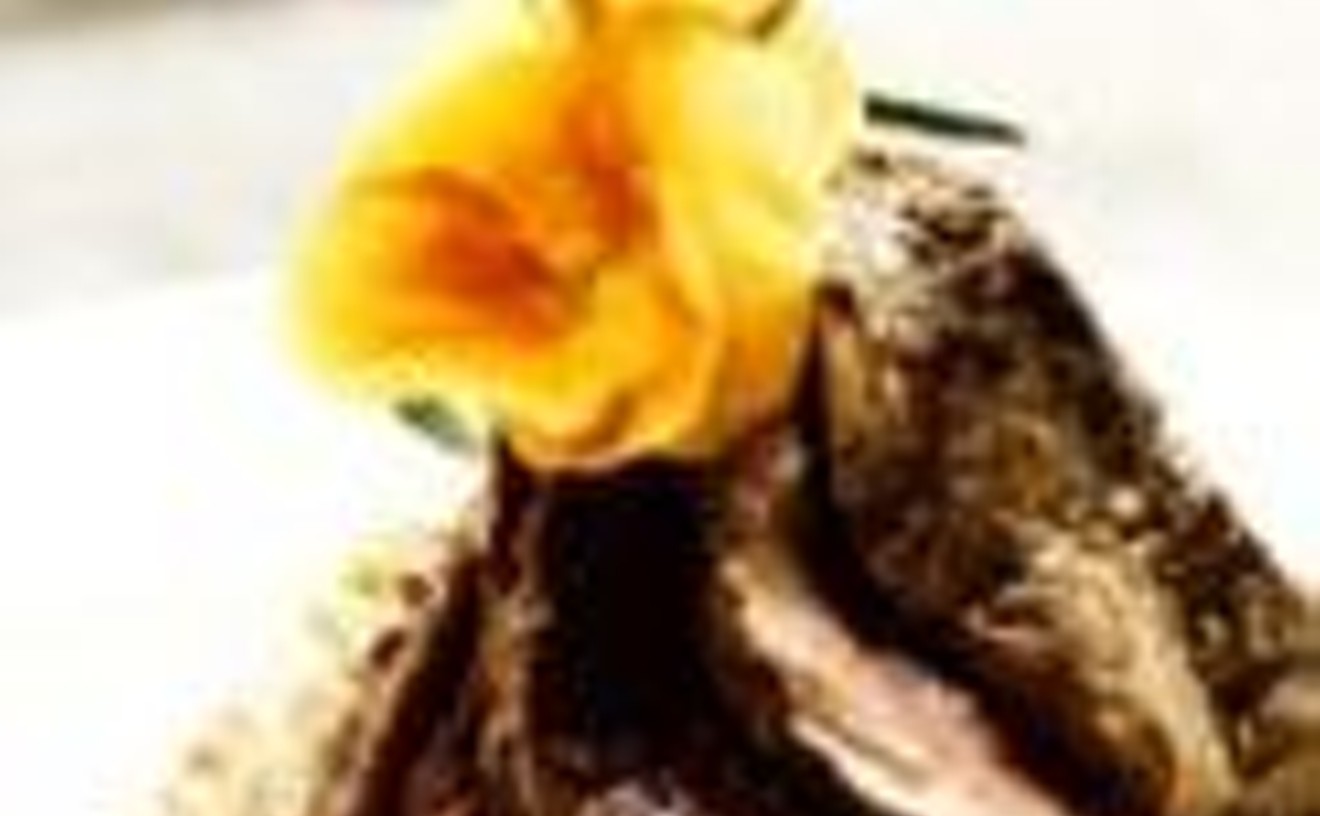
Duluth's feisty alternative newspaper, if it has one, probably doesn't accord a Best Outdoor Dining award in its annual roundup of the city's finest. That's one reason we don't live in Duluth, Minnesota. Miami, on the other hand, features a plethora of al fresco restaurants all year round. How can one choose among so many options? Hint: Select the surroundings with the best food, wine, and service. Talula is that place. The canopied garden patio, which seats 55, is lushly landscaped, luminously lit, and -- in summer -- tented and air-conditioned. The contemporary American cuisine of chef/owners Frank Randazzo and Andrea Curto-Randazzo likewise shines. In fact you really don't need to feel the warm night breeze caressing your face in order to fall in love with a starter of cascabel-crusted barbecue quail with brandy-porcini demi-glace, or with crisply fried Chesapeake Bay oysters with watermelon-blackened corn salsita. And entrées such as sake-marinated Alaskan halibut with miso-orange glaze, or porcini-crusted venison loin with truffle-parsnip puree, would be luxuriously delicious even if eaten in a dark, dank alley. Appetizers range from $8 to $18, main courses $24 to $32. Service is as friendly as you would find in Duluth (they are very polite out there), and Sunday wine specials bring discounts on the savvy global selection. Look hard enough and you can probably find a grander open-air setting for dinner, but you will not discover a better outdoor dining experience than the one Talula consistently delivers.
- 210 23rd St., Miami Beach, 33139 Map
- 305-672-0778
- www.talulaonline.com
Best Paella
La Dorada

"The sign of good paella is really in the rice," says Beatrice Bajares, owner of Spanish restaurant La Dorada. "It's the same as with pasta. If pasta is not cooked al dente it tastes bad." And to get the rice right, explains Bajares, a good paella must be prepared fresh, slowly, and on the premises. La Dorada offers two varieties of the dish: a traditional fish and shellfish version, and a black paella cooked with squid, baby calamari, and fish. Every evening around 11:15 p.m. (5:15 a.m. in Spain), Bajares phones her contacts in the Spanish port city of Malaga as the daily fish market opens. She ascertains what seafood the fishermen have that morning and then places an order according to her needs. "The fish are put on ice and flown from Malaga to Madrid to Miami that day," she informs. "The razor clams arrive at the restaurant still alive." In addition to the best rice and just-off-the-boat seafood, she says La Dorada uses only fresh saffron and high-quality extra virgin olive oil. The paella costs $26 per person and is worth every penny.
- 177 Giralda Ave., Coral Gables, 33134 Map
- 305-446-2002
- ladoradarestaurant.com/
Best Cheap Waterfront Dining
Shuckers
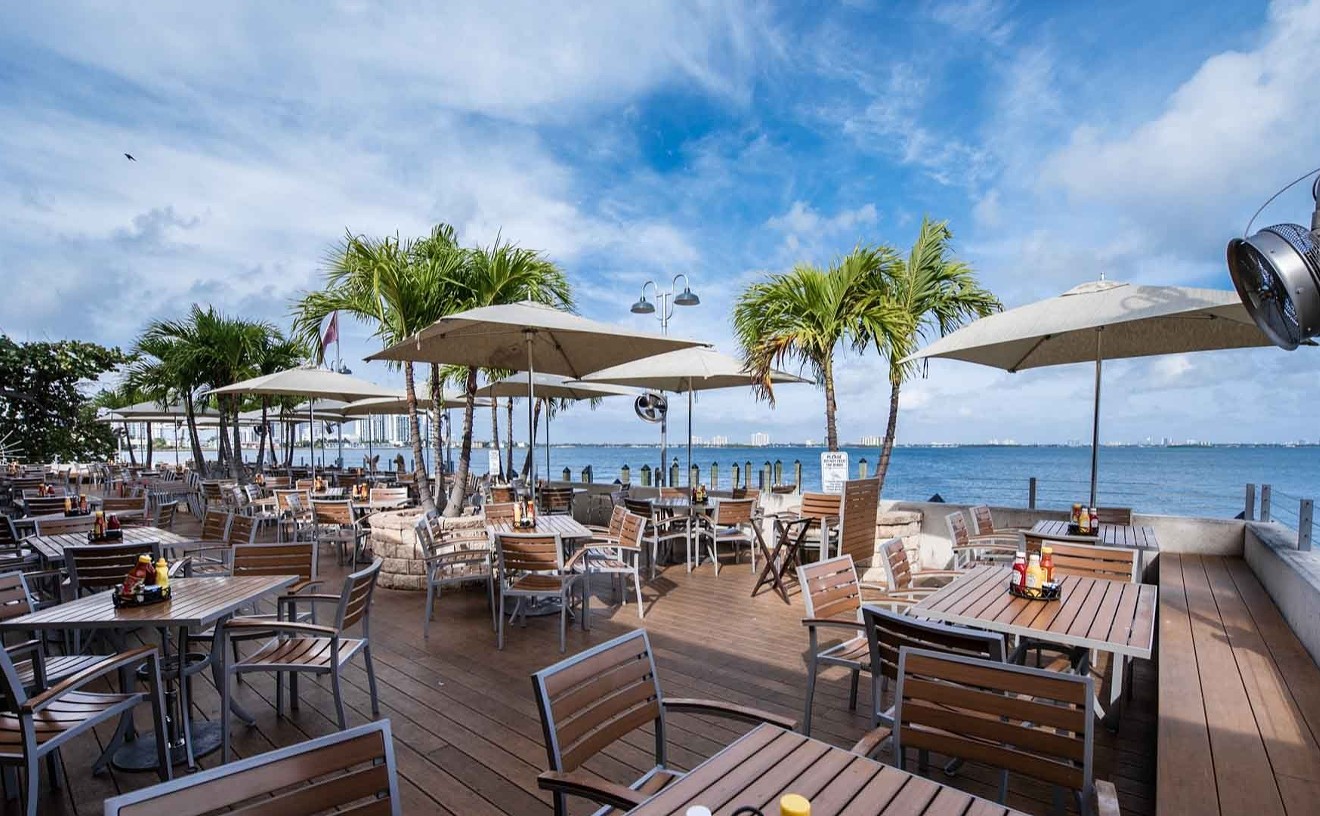
Photo courtesy of Shuckers Bar & Grill
Shuckers is a dive in the most gloriously comfortable and time-worn sense of the word. Boaters, beachgoers, and tired worker bees are all habitués of this outdoor bar/restaurant. You don't need a platinum card or a tie to gain entrance; you simply need to know how to navigate the mazelike parking lot of the North Bay Village Best Western. If you can do that (just follow the sound of the jukebox or of pool balls clicking on the coin-operated table), you will find one of the best waterfront views in Miami and a chance to eat fresh grouper or snapper fillets ($8 with a side of French fries) without taking out a new mortgage.
- 1819 79th St. Cswy., Miami Beach, 33141 Map
- 305-866-1570
- shuckersbarandgrill.com
Best Mofongo
Benny's Seafood Restaurant
Mofongo is the signature dish of any Puerto Rican restaurant worth its salt. Whether served as an entrée or an accompaniment, the mashed plantain concoction must not be too dry or too mushy, and it must strike the perfect balance between the mild saltiness that keeps it from being bland, and overseasoning. Benny's, which has been serving Puerto Rican food for twelve years, offers several mofongo dishes, all served in a wooden mortar bowl. Chewy on the outside, soft in the middle, liberally seasoned with crunchy pork bits and garlic ... this mofongo -- whether you order it con langosta, con camarones, or plain -- is perfect. Prices vary, from $23 for the most expensive mofongo dish, which comes with an array of seafood, to $8 for plain. (While you're at Benny's, try some of the other Puerto Rican food, like fried blood sausage, and green banana ceviche stocked with chicken gizzards.)
Best Tapas
Bahía at the Four Seasons
Bahía, the outdoor tapas lounge on the Four Seasons Hotel's seventh-floor terrace, offers the European snack with a distinctively Latin American, oceangoing twist. Tapas developed from an old Spanish bar custom of placing a saucer on top of wine glasses. Someone put a few olives on the saucer, and from that evolved today's finger-food-as-a-meal. In Spain, tapas bars really get going around 3:00 a.m., and much of what is served is some variant of tinned meat. Bahía, which takes its name from a region of Brazil, uses that country's marine bounty as its tapas template. Among a dozen choices are the staid aceitunas variedades (assorted olives, $3); pimientos del piquillo rellenos de bacalao ($9), which are pickled peppers served on baguette slices with cod; croquetas de marisco ($8), stuffed with lobster (but also available in ham and spinach); boquerones en vinagre ($8), a larger, paler, spicier type of the much-maligned anchovy; and patatas aioli ($5), forever unhumbling the potato. Specialty drinks at Bahía -- takes on the mojito and margarita -- are tasty and market-priced around $12, but go for the "caipiroska" (vodka, fresh strawberries, and froths of sugar). Bahía is in an awesome spot facing the water, but the space itself -- nearly an acre plain featuring a vast lap pool and a lighted waterfall -- is incredibly tranquil. Bahía serves tapas and escapism 5:00 p.m. to midnight Tuesdays through Saturdays.
Best Waterfront Dining
Big Fish

It's not so much the sweeping view of an iridescent Miami skyline that excites the senses -- though no place in the city offers a better scenic setting. Rather it's the outdoor dining patio's location adjacent to the water, which provides a rare, eye-level view of passing freighters, fishing boats, speed boats, dinghies, and yachts. It gives the sensation you are sitting right inside the skyline; that's what gets the juices flowing. And flowing some more once you grab a cocktail from a bar that wraps itself around a giant banyan tree. This a popular late-afternoon gathering spot -- especially during Friday's happy hour when downtown workers flock to Big Fish like pelicans to dock posts. But atmosphere is not the only draw here; most of the faithful clientele come for hearty portions of fresh Southern Italian-accented seafood and pastas. Catches include sea bass with roast peppers and fennel ($32); crisply fried whole yellowtail ($23); a mixed grill for two that includes a plethora of crackly crustaceans ($64); and possibly the plushest, lushest crabcakes south of Maryland. Pillows of porcini-filled agnolotti ($23) and homemade tagliolini with shaved truffles ($17) serve as savory reminders that this is not just a seafood house. When seeking waterfront dining that combines picturesque visuals with delectable victuals, you need not fish around: This is your spot.
- 55 SW Miami Ave., Miami, 33130 Map
- 305-373-1770
- www.thebigfishmiami.com


